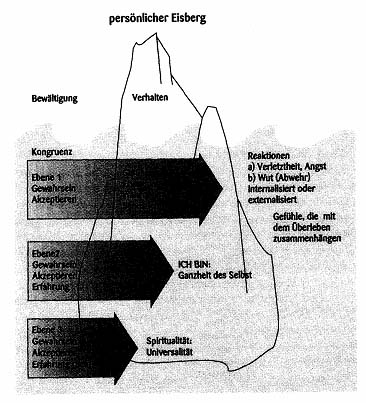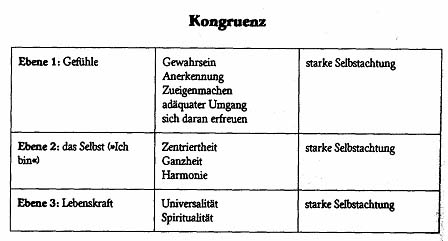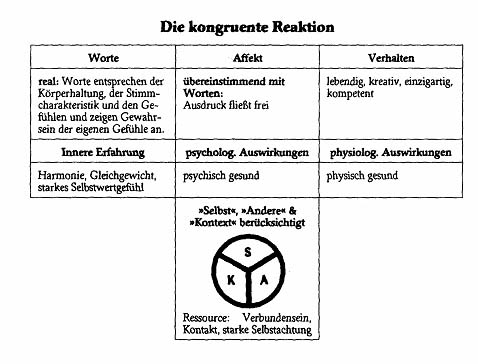The Fifth Stance: Congruence
Virginia Satir believed that a large part of miscommunication arises from incongruences in communication.
Congruence is not another survival stance but rather a way to become fully human — a state of wholeness and alignment.
Congruence is one of the core elements of the Satir Model. It is both a state of being and a way of communicating with oneself and with others. Strong self-esteem and congruence are two key indicators of a person’s development toward wholeness. Congruence is characterized by:
- Appreciation of one’s own uniqueness
- Free flow of personal and interpersonal energy
- Claiming one’s full personhood
- Willingness to trust oneself and others
- Willingness to take risks and to be vulnerable
- Using one’s inner and outer resources
- Openness to intimacy
- Freedom to be oneself and to accept others as they are
- Love toward oneself and toward others
- Flexibility and openness to change
According to Virginia Satir, congruence has three levels:
|
Level 1: Awareness Acceptance Level 2: Awareness Acceptance Experience Level 3: Awareness Acceptance Experience (Being) |

|
Working Toward Congruence


To help people communicate in a congruent way, Virginia Satir created a list of key guidelines:
- Be aware of yourself, of others, and of the context.
- Give others your full attention when you engage with them.
- Be aware of the messages your body communicates.
- Be aware of your defense mechanisms and family rules.
Congruence refers both to a state of being and to a quality of communication. On the first of the three levels, congruence means acknowledging and accepting our inner experiences (sensations, interpretations, and the feelings that arise from them). On the second level, it involves listening to our perceptions and expectations and translating them into a pattern that responsibly meets our needs by responding to our deepest yearnings. On the third level, we evolve in harmony with our spiritual essence or what Virginia Satir called the universal life force.

 Deutsch
Deutsch English
English Français
Français 中文
中文 Español
Español नहीं
नहीं Русский
Русский